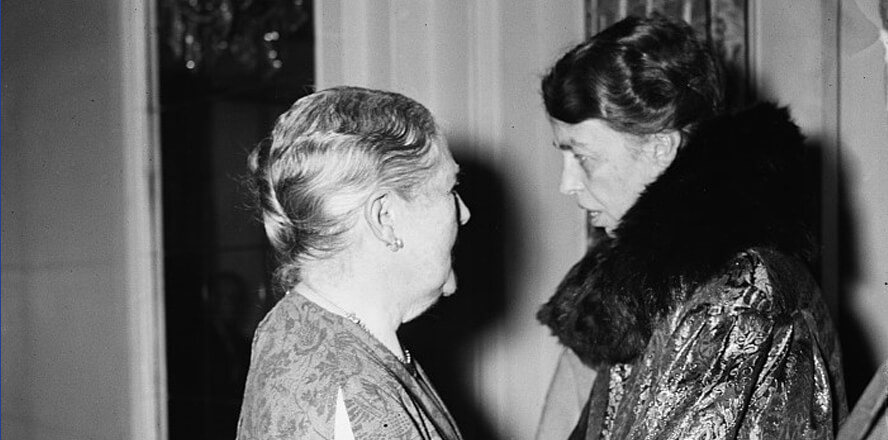 Mary Kingsbury Simkhovitch and Eleanor Roosevelt at the 1934 NHC Gala.
Mary Kingsbury Simkhovitch and Eleanor Roosevelt at the 1934 NHC Gala.
(Photo: Mary Kingsbury Simkhovitch and Eleanor Roosevelt at the 1934 NHC Gala.)
This month is Women’s History Month, and there are few housing organizations with as rich a history of leadership by historic women than the National Housing Conference. In 1930, the City Affairs Committee (CAC) of New York, a nonpartisan group founded to work for a better city through research and education created a housing committee, led by a prominent leader of the Settlement House movement, Mary Kingsbury Simkhovitch. At that time, half of New York City’s population lived in slums, many without electricity or indoor plumbing. But Mrs. Simkhovitch and her close friend and fellow social worker and CAC officer, Helen Alfred, recognized that the Great Depression was devastating the city and the country faster than they could respond alone. Together with Edith Elmer Wood, they realized that social advocacy could be much more impactful if they aligned with investors, homebuilders and labor unions.
Together on March 22, 1932, they founded the Public Housing Conference in New York City. With the election of Franklin Roosevelt in November of 1932, the organization took its agenda to Washington and changed its name to the National Public Housing Conference, and eventually to the National Housing Conference, as it is known today.
While women were leading the affordable housing movement in New York City, there were still few in positions of power held by women in Washington, DC, where national housing policy was beginning to be made. But there was one woman, who had enormous influence in Washington, and was a longtime friend of Mrs. Simkhovitch – Eleanor Roosevelt. Together, they raised money for NHC. They also convinced President Roosevelt that rental housing and homeownership were inextricably linked, leading to the inclusion of public housing development in the New Deal’s infrastructure program, the Public Works Administration in 1933. By 1935, much legislation had passed but millions more Americans were still homeless or living in substandard housing. A National Housing Act was needed to address the crisis, and New York Senator Richard Wagner (D-N.Y.), who worked with Mrs. Simkhovitch on the National Industrial Recovery Act of 1933, which created the PWA, was ready to help. Having led the effort to pass the National Labor Relations Act, he was ready to again take on housing, but not without the active support of the president.

Mrs. Simkhovitch knew exactly where to go, and soon, President Roosevelt was sending a note to Senator Wanger suggesting that “After you get back and I get back from Warm Springs, I should much like to have a talk with you in regard to the more permanent aspects of slum clearance and low cost housing.” Below his initials in the White House copy of the letter was this postscript: “MEMO FOR ER This refers to Mrs. Simkhovitch’s letter.” Two years later, the National Housing Act of 1937 was signed into law.
Today, brilliant and powerful women don’t have to rely on their husbands. They run for president, get elected to the Senate and chair the House Financial Services Committee. They also make up half of the Board of Governors of the National Housing Conference, building housing from Northern California to New York and everywhere in between. We still have much progress to make on issues involving women’s equality, but here at NHC, we also have a long and proud history of achievement that would have been impossible without the leadership and ingenuity of women like Mary Kingsbury Simkhovitch, Helen Alfred and Eleanor Roosevelt.

